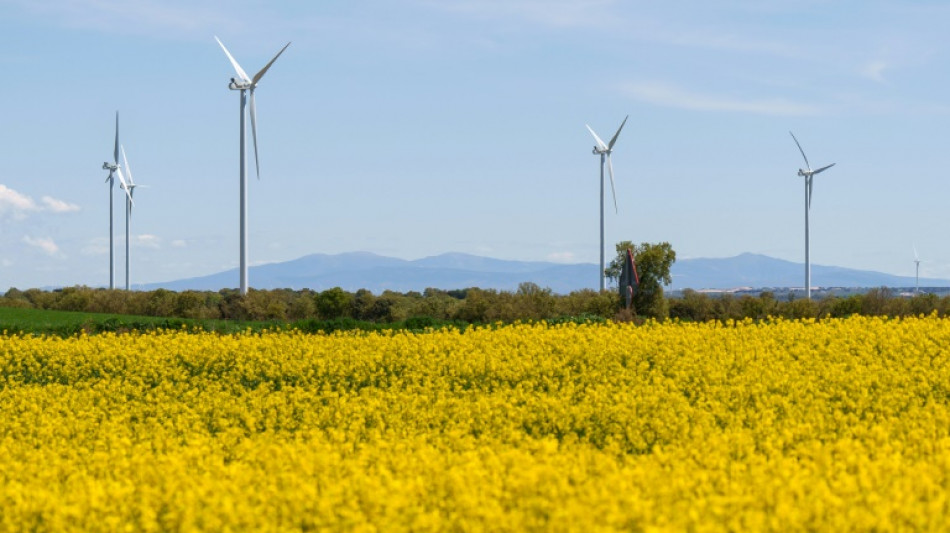
-
 Rybakina downs Swiatek to reach WTA Finals last four
Rybakina downs Swiatek to reach WTA Finals last four
-
Ex-France international Ben Yedder to stand trial on rape charges

-
 Djokovic confirmed for ATP Finals, says Italian federation boss
Djokovic confirmed for ATP Finals, says Italian federation boss
-
Trent should be remembered for 'great' Liverpool moments, says Slot

-
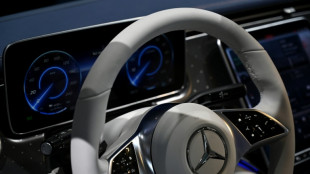 Stock markets diverge despite boost from AI deals
Stock markets diverge despite boost from AI deals
-
Prince William awed by Rio on climate-focused trip to Brazil
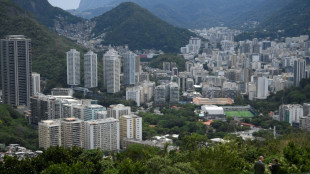
-
 Violence in Sudan's El-Fasher could be war crimes, says top court
Violence in Sudan's El-Fasher could be war crimes, says top court
-
Rybakina downs Swiatek in WTA Finals

-
 Turkey, Muslim allies say Palestinian self-rule key to Gaza future
Turkey, Muslim allies say Palestinian self-rule key to Gaza future
-
Tens of thousands shelter as typhoon slams into Philippines
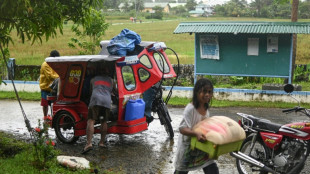
-
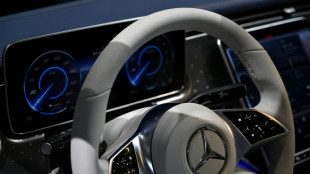 Stock markets rise as tech sector buoyed by fresh AI deal
Stock markets rise as tech sector buoyed by fresh AI deal
-
Vitinha says PSG-Bayern Champions League clash will show who's 'best'

-
 Arsenal: The unstoppable Premier League force?
Arsenal: The unstoppable Premier League force?
-
Denmark inaugurates rare low-carbon hydrogen plant

-
 Springboks back Ntlabakanye call-up despite doping probe
Springboks back Ntlabakanye call-up despite doping probe
-
German plans to lower industrial power costs from January
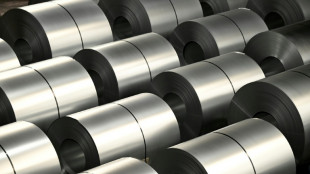
-
 Christian, Muslim Nigerians push back on threatened US strikes
Christian, Muslim Nigerians push back on threatened US strikes
-
Nigeria's Rivers United paired with African champions Pyramids

-
 India women cricketers hail new era but challenges remain
India women cricketers hail new era but challenges remain
-
'Heroic' worker praised as man charged over UK train stabbings
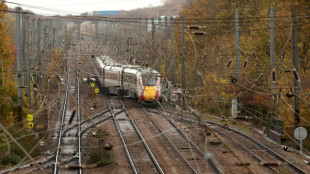
-
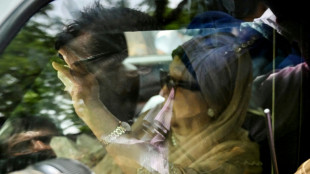 Bangladesh ex-PM Zia to contest elections: party
Bangladesh ex-PM Zia to contest elections: party
-
Tanzania president sworn in as opposition says hundreds killed in protests

-
 India announces $5.75 million reward for women cricket World Cup winners
India announces $5.75 million reward for women cricket World Cup winners
-
Stock markets rise on AI optimism

-
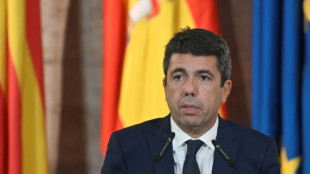 Spain regional leader resigns, a year after deadly floods
Spain regional leader resigns, a year after deadly floods
-
Video game creators fear AI could grab the controller

-
 France threatens Shein ban if 'childlike' sex dolls reappear
France threatens Shein ban if 'childlike' sex dolls reappear
-
International cricket returns to Faisalabad with Pakistan-South Africa ODIs

-
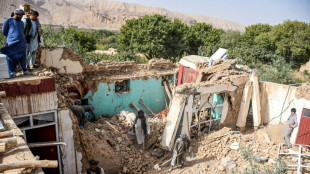 Afghan govt says quake kills 20, injures over 500
Afghan govt says quake kills 20, injures over 500
-
'We're all too rich,' says photo legend Martin Parr

-
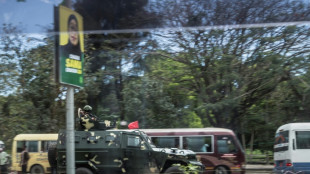 Tanzania president inaugurated as opposition says hundreds dead
Tanzania president inaugurated as opposition says hundreds dead
-
Shafali Verma: India's World Cup hero who disguised herself as boy

-
 Most equity markets rise on lingering trader optimism
Most equity markets rise on lingering trader optimism
-
Asian markets rise on lingering trader optimism

-
 Afghanistan quake kills 20, injures over 300: health ministry
Afghanistan quake kills 20, injures over 300: health ministry
-
India hails maiden women's World Cup cricket title as game-changer
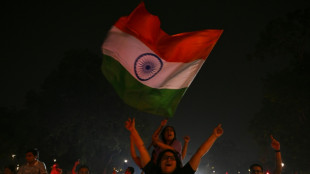
-
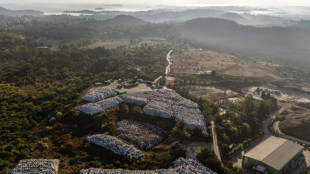 As clock ticks down, Greece tries to clean up its act on waste
As clock ticks down, Greece tries to clean up its act on waste
-
Local fabrics, fibres shine at eco-centred Lagos Fashion Week
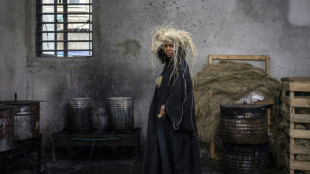
-
 Spalletti bidding to revive Juve and reputation ahead of Sporting visit in Champions League
Spalletti bidding to revive Juve and reputation ahead of Sporting visit in Champions League
-
Tanzania president to be inaugurated as opposition says hundreds dead
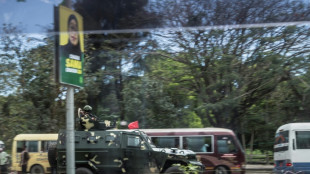
-
 Bouanga brace as LAFC beats Austin 4-1 to advance in MLS Cup playoffs
Bouanga brace as LAFC beats Austin 4-1 to advance in MLS Cup playoffs
-
'Golden age': Japan hails Yamamoto, Ohtani after Dodgers triumph

-
 Thunder roll over Pelicans to remain NBA's lone unbeaten team
Thunder roll over Pelicans to remain NBA's lone unbeaten team
-
Hong Kong legislature now an 'echo chamber', four years after shake-up

-
 Most Asian markets rise on lingering trader optimism
Most Asian markets rise on lingering trader optimism
-
Andrew to lose his last military rank: defence minister

-
 Trump's global tariffs to face challenge before Supreme Court
Trump's global tariffs to face challenge before Supreme Court
-
Barnstorming Bayern face acid test at reigning champions PSG

-
 Alonso shaping new Real Madrid on Liverpool return
Alonso shaping new Real Madrid on Liverpool return
-
Half Yours favourite at Australia's 'race that stops a nation'
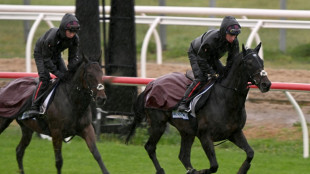
| RBGPF | -3.95% | 76 | $ | |
| RYCEF | 1.24% | 15.34 | $ | |
| CMSD | -0.33% | 23.91 | $ | |
| NGG | -0.41% | 74.94 | $ | |
| CMSC | -0.38% | 23.66 | $ | |
| VOD | -5.42% | 11.43 | $ | |
| SCS | 0.08% | 15.972 | $ | |
| AZN | -0.98% | 81.6 | $ | |
| BCC | -3.68% | 67.99 | $ | |
| RIO | -1.98% | 70.345 | $ | |
| RELX | -0.14% | 44.18 | $ | |
| GSK | -0.94% | 46.425 | $ | |
| BCE | -1.04% | 22.625 | $ | |
| JRI | -0.43% | 13.84 | $ | |
| BP | -0.09% | 35.098 | $ | |
| BTI | 2.51% | 52.51 | $ |

Spain's blackout highlights renewables' grid challenge
The cause of last week's massive power outage in Spain and Portugal remains unclear but it has shone a spotlight on solar and wind energy, which critics accuse of straining electricity grids.
The rise of renewables presents a challenge for power grids, which must evolve to adapt as countries move away from fossil fuels.
- Maintaining stability -
Grid operators must ensure that electricity is constantly balanced between demand and supply.
A metric of this balance is the frequency of the electricity flowing through the grid, set at 50 hertz (Hz) in Europe and 60 Hz in the United States. If that number drifts too far off, it can jeopardise the grid.
Historically, the electricity system has relied on conventional power plants -- gas, coal, nuclear and hydroelectric -- that use spinning turbines to generate electricity.
These machines keep the frequency stable.
With their gigantic rotors spinning at high speed, they provide inertia to the system.
If a power plant fails or if electricity demand increases too quickly, they help stabilise the grid by releasing the kinetic energy stored in the rotors.
Instead of spinning machines, solar and wind farms use electronic systems that feed power into the grid, making it harder to maintain that delicate balance.
Renewable energy will have to do more than provide carbon-free electricity in the future, said Jose Luis Dominguez-Garcia, an electrical systems expert at the Catalonia Energy Research Institute (IREC).
They will have to "assist the system with additional controls to support the grid, particularly in inertia terms", he said.
Marc Petit, professor of electrical systems at top French engineering school CentraleSupelec, argued that moving away from fossil fuels would make hydroelectric and nuclear power plants "even more essential for stabilising the system" as they use rotating machines.
- Flywheels -
A range of technical solutions already exist to compensate for renewables' lack of inertia and hence to support grid stability.
These include gravity storage, cryogenic liquid air, compressed air and concentrated solar power.
As it undergoes a transition away from coal, Britain is banking on flywheels, a tried and tested system.
Surplus power from solar and wind farms is used to make the large wheels turn, creating kinetic energy.
This stored energy can then be converted to provide electricity to the grid if needed.
- No sun or wind -
Just before the massive blackout on April 28, wind and solar power provided 70 percent of Spain's electricity output. But renewables are intermittent sources of energy as they rely on nature.
When the wind stops blowing or the sun is hiding, other sources have to step in within minutes, or there need to be adequate systems for storing -- and then releasing -- renewables in place.
Depending on the country, backup supply currently comes from mainly thermal power plants (gas or coal), nuclear reactors or hydroelectricity.
To handle the ups and downs of renewable power, countries must ramp up storage capacity.
The most widespread method is pumped storage hydropower from water reservoirs.
But large stationary batteries, akin to shipping containers, are increasingly being deployed alongside wind and solar farms -- a segment dominated by China.
To meet the global goal of tripling renewable capacity by 2030, storage capacity will have to increase sixfold, with batteries doing 90 percent of the work, according to the International Energy Agency.
Another way to ease pressure on the system would be to shift electricity use -- for example when you charge your car battery -- to the middle of the day, when solar power is at its peak.
- Rescale the network -
Widespread blackouts "have virtually always been triggered by transmission network failures, not by generation, renewables or otherwise", said Mike Hogan, advisor with the Regulatory Assistance Project (RAP), an NGO whose stated goal is to achieve a clean, reliable, equitable and cost-efficient energy future.
Tens of billions of euros, perhaps hundreds of billions, will be needed to renovate ageing power lines and replace them with new ones that are more powerful.
The need to modernise or expand the lines is pressing as energy-hungry data centres are growing and factories are increasingly consuming electricity.
Countries also need to strengthen interconnections between their power systems.
Such cross-border links helped to restore power to Spain as France stepped in to share electricity during the blackout.
By 2028, exchange capacity between the two neighbours is expected to increase from 2.8 to 5.0 gigawatts, reducing the peninsula's relative electrical isolation.
M.AbuKhalil--SF-PST
